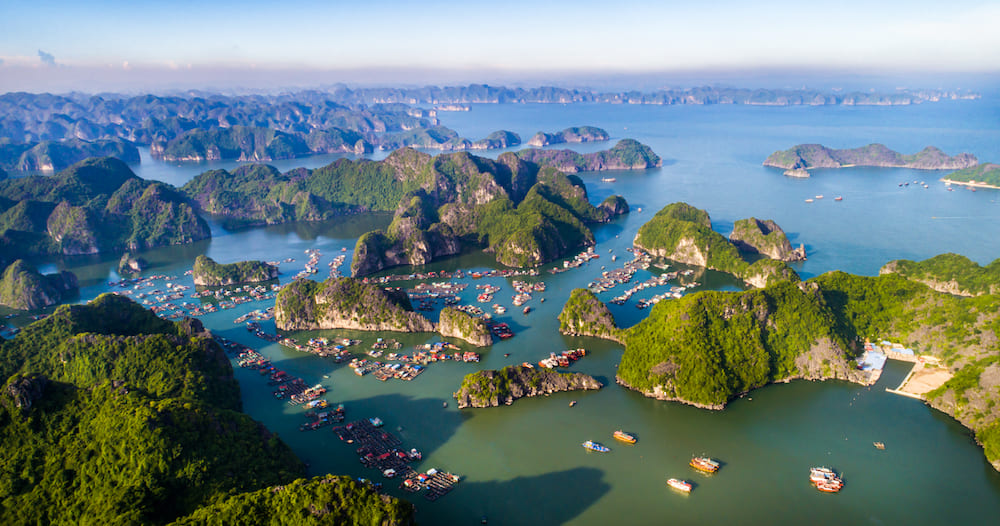
Cat Ba Archipelago of Vietnam featured on CNN
- on Nov 27, 2024 By: Phuong Mai NGUYEN
On November 5th, a captivating short video introducing the Cat Ba Archipelago in the Cat Hai district of Hai Phong City aired on CNN, the renowned American cable television network.
The video highlights the natural beauty and unique landscapes of the Cat Ba Islands, showcasing their stunning bays, pristine beaches, and rich biodiversity. As a prominent destination in Vietnam, Cat Ba continues to gain international recognition, with CNN’s coverage boosting its presence among travelers seeking authentic and unspoiled destinations.
An invitation to discover exceptional nature
Aiming to introduce the Cat Ba Archipelago to travelers worldwide as a must-visit destination, CNN’s 30-second video is a true visual masterpiece highlighting the magnificence of this hidden treasure on the north coast of Vietnam. Through a series of stunning footage, this short video invites viewers to a world where nature reigns supreme, still untouched by modern influences, where every element seems to belong to another time, perfect for travelers seeking authentic and immersive experiences.
An exceptional natural setting: The Cat Ba archipelago and its 358 islands
The Cat Ba Archipelago, comprised of 358 islands, is a true oasis of biodiversity. Though little known, this destination is distinguished by breathtaking landscapes formed by the perfect union of karst mountains, crystal-clear waters, and lush vegetation. The video allows viewers to admire the contours of these islands, secluded beaches, dramatic rock formations, and mysterious caves that dot the land.
The archipelago is highly valued by nature lovers for its exceptional wildlife and plant species. One of Cat Ba's unique characteristics is the harmonious coexistence of humans and nature. This compelling balance between preserving biodiversity and promoting sustainable tourism is effectively showcased in the CNN video.
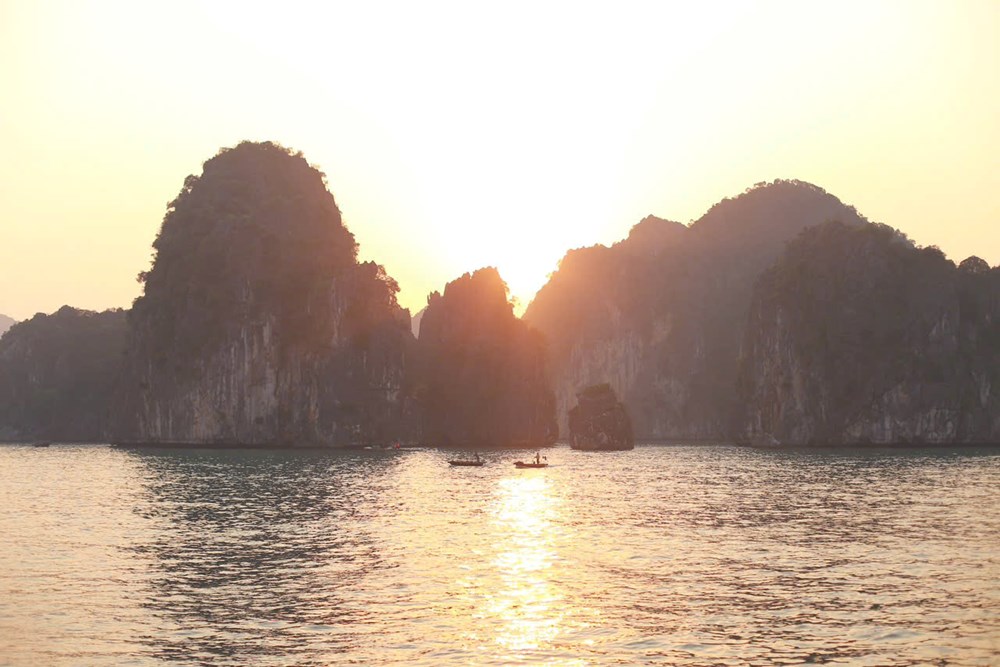
A biodiversity of 2,230 species of animals and plants
Cat Ba is home to approximately 2,230 species of animals and plants, including nearly 60 rare and endangered species. This makes the archipelago an internationally significant site, fully deserving of its place on UNESCO's World Heritage List. The video presents spectacular scenes of local wildlife in their natural habitat, including peacocks, deer, and notably the Cat Ba langur, an endemic primate, as well as various species of birds, marine flora, and fauna. These images testify to the ecological wealth of the archipelago and its importance as a natural sanctuary.
Additionally, the video perfectly captures how nature reigns in a peaceful and serene atmosphere, emphasizing the importance of preserving these ecosystems, which are treasures to protect for future generations.
Lan Ha Bay: A Hidden Gem of Vietnam
One of the highlights of this video is Lan Ha Bay, often compared to its famous neighbor, Ha Long Bay. While Ha Long is globally renowned, Lan Ha remains a more discreet but equally stunning destination, characterized by a diversity of landscapes with lush islands, turquoise waters, and verdant vegetation. This hidden gem offers a peaceful experience that promises to delight travelers in search of tranquility and natural beauty.
In the video, we can also see traditional boats gently gliding across the water, adding a touch of authenticity. The contrast between wild nature and human activity underscores the commitment to maintaining environmentally respectful tourism.
A strategic broadcast
The video will be aired throughout the regions of Asia-Pacific, East Asia, and South Asia, as part of several daily shows on CNN, from November 5 to December 2, contributing a great opportunity for Vietnam to raise its profile on the international scene, particularly with potential travelers looking for pristine, charming destinations.
Airing several times a day, this video aims to attract the attention of a broad audience, including high-end travelers seeking exclusive destinations and unforgettable experiences, who are drawn to the idea of exploring lesser-known natural sites, and the Cat Ba Archipelago perfectly adapts this demand. Furthermore, this promotional campaign on CNN presents an opportunity for Vietnam to position itself as a leading destination for ecotourism and sustainable tourism in Asia.
Vietnam and its three iconic bays
Vietnam, with exceptional landscapes, abounds in natural sites that seduce travelers in search of authenticity and beauty. Among these wonders, three iconic bays stand out for their grandeur and uniqueness: Ha Long Bay, Lan Ha Bay, and Bai Tu Long Bay. Alongside the world-renowned Ha Long Bay, its lesser-known neighbors, Lan Ha, and Bai Tu Long, boast equally impressive landscapes and deserve just as much attention. These three bays, which form the golden triangle of the Tonkin Gulf region, make up a wonderful natural ensemble that rivals the world’s most beautiful sites.
Ha Long Bay: The Pearl of Vietnam
Ha Long Bay, Vietnam’s undisputed icon, is one of the most visited sites in the world. With its 1,600 limestone islands that rise majestically from the emerald waters, Ha Long Bay fascinates visitors with its inimitable character and diverse landscapes. These rock formations, some of which are covered in dense vegetation, seem to have been sculpted by nature itself, creating a striking spectacle at every turn. Boat cruises allow visitors to soak up the beauty of this exceptional site, while the secluded beaches and mysterious caves, such as Sung Sot Cave and Trinh Nu Cave, add an adventurous touch to the exploration.
Ha Long Bay is also a place for cultural discovery, with floating villages where fishermen continue to uphold ancient traditions. This human aspect of the bay, combined with its natural beauty, makes it an unmissable destination for travelers from all over the world.
Bai Tu Long Bay: The Secret Escape
Less known than Lan Ha Bay, Bai Tu Long Bay is one of Vietnam’s best-kept secrets. Located to the northeast of Ha Long Bay, it is often described as a quieter, more isolated version of Ha Long Bay. Although less publicized, Bai Tu Long Bay promises just as spectacular an experience. Visitors can reach it by boat, navigating between the thousands of limestone islands that dot the horizon, forming a true natural maze. The wild and isolated nature of the bay creates an intimate, preserved atmosphere, ideal for travelers in search of adventure and solitude.
The bay's shallow waters, dotted with small islands and islets, are ideal for kayaking and scuba diving excursions, displaying the stunning views of the Cong Do Islands and the Vung Vieng floating village, where locals continue to live off traditional fishing. Considered the most secretive of the three bays, this destination is a place of peace and contemplation, perfect for those seeking to escape mass tourism.
Lan Ha Bay: A haven of wild and preserved beauty
Just a short distance from Ha Long, Lan Ha Bay offers a striking contrast. Less crowded and more preserved, this bay has maintained its wild and natural character, far from the crowds that overwhelm Ha Long Bay. Lan Ha is distinguished by its 300 islands and equally impressive karst formations, but in a much more intimate and peaceful setting. The landscape is dominated by lush mountains that plunge directly into the crystal-clear waters, creating an unmatched visual spectacle. The white sand beaches and turquoise waters of the bay are perfect for travelers seeking serenity and untouched beauty.
Travelers exploring Lan Ha are treated to a preserved natural setting, where humans have learned to coexist harmoniously with the environment. Mysterious caves, like the famous Bat Cave, and the hidden coves of Lan Ha offer moments of tranquility, far from the usual tourist circuits.
The Cat Ba langur, a rare and endemic primate, makes this bay an even more fascinating destination. This grey-coated, white-headed monkey is one of the most emblematic animals of the Cát Bà archipelago, and its presence in the national park is a sign of the region's exceptional biodiversity. Seeing these langurs in their natural habitat, high up in the karst mountains, or swinging in the trees, is a unique experience that adds a mystical dimension to exploring Lan Ha Bay.
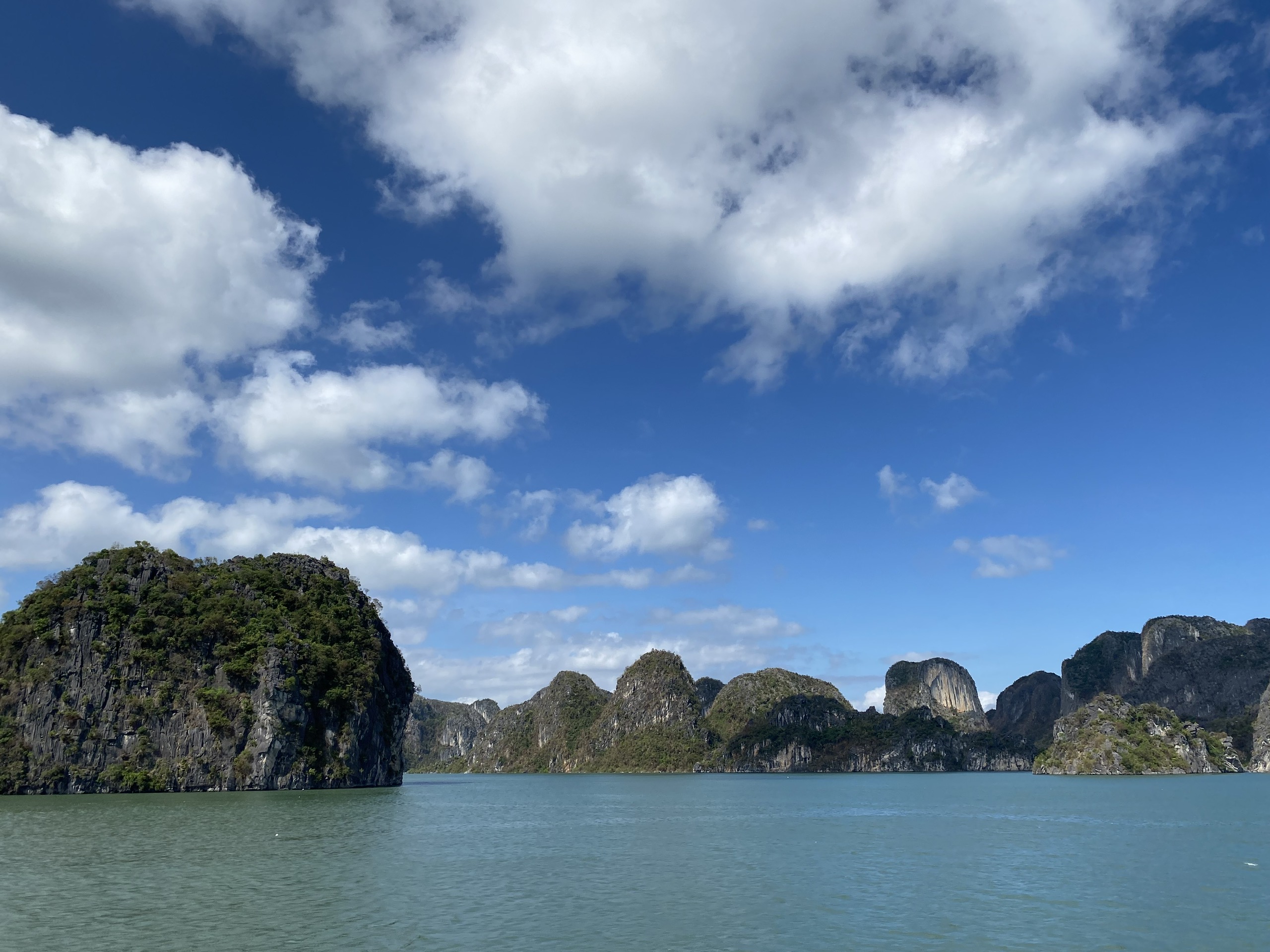
A unique ecosystem and preserved biodiversity
What links these three bays, in addition to their natural beauty, is the richness of their ecosystems and the diversity of their fauna and flora. The Tonkin Gulf, where the bays are located, is known for its exceptional biodiversity, a sanctuary for many marine species, as well as for terrestrial and aerial animals. The Cat Ba langur, for instance, is just one of many examples of rare and endemic wildlife found in this region. Species such as sea seals and multi-colored fish are also present, contributing to making this region a paradise for nature lovers and wildlife photographers.
The three bays, with their unique atmosphere and rich biodiversity, represent a true natural sanctuary that deserves to be explored and preserved. They offer travelers a rare opportunity to discover breathtaking landscapes while respecting the fragile balance of the local ecosystem. With these three iconic bays, Vietnam has become an essential destination for nature enthusiasts, explorers, and environmental preservation advocates.
Post-typhoon challenges and rehabilitation efforts in Cat Ba
Like many coastal regions, the Cat Ba archipelago is no exception to the challenges imposed by extreme climatic conditions.
In September 2024, the region was severely impacted by Super Typhoon Yagi, which left deep scars on local infrastructure, particularly those related to the tourism sector. Luxury cruises operating in Lan Ha Bay were interrupted due to damage to docks, port facilities, and tourist reception structures. Despite these disruptions, efforts to rehabilitate the bay and restore its high-quality tourism services are well underway.
Post-typhoon challenges: significant damage
Typhoon Yagi struck the region with rare ferocity, causing flooding and violent storms that severely impacted sensitive infrastructure. Many boat cruises, which are the core experience of tourism in Lan Ha Bay, had to suspend activities for several weeks. Damage to docks and port infrastructure also delayed boat navigation, reducing access to certain parts of the bay and affecting the local economy.
However, the damage was not confined to maritime infrastructure. Hotels, resorts, and restaurants, which are highly sought after by travelers looking for a luxury experience, had to undergo significant repairs, including fixing roofs, electrical systems, and common areas. Additionally, the winds and rains disrupted local life, damaging hiking trails in Cat Ba National Park, a protected and highly valued area for nature lovers.
Rehabilitation efforts: Restoring infrastructure and services
In response to this challenging situation, local authorities and stakeholders in the Hai Phong tourism sector, including the Hai Phong Tourism Association, have ramped up efforts to restore Lan Ha Bay and bring back tourism services as soon as possible. A series of actions have been implemented to ensure a quality tourism experience, in line with the region's reputation.
• Restoring maritime infrastructure: One of the priorities has been repairing ports and docks, which are essential for the transport of travelers and goods. Authorities have worked closely with local businesses to bring luxury cruises back into operation, with new maritime routes being established. Damaged infrastructure is being gradually repaired to ensure the smooth resumption of activities.
• Strengthening reception services: Hotels and other accommodation structures on the island have undergone emergency repairs, with some even undergoing renovations to offer superior experiences to travelers. Modernization projects are ongoing to improve the available facilities and services, including the installation of more sustainable energy systems that are resistant to extreme weather, ensuring better security and comfort for visitors.
• Maintaining the ecosystem and natural sites: In addition to restoring human infrastructure, an ecological rehabilitation program has been launched to preserve the unique biodiversity of Cat Ba. This includes repairing hiking trails, monitoring protected coastal forests, and reintroducing endangered species into their natural habitats. Local authorities have also intensified efforts to reduce the ecological impact of tourism infrastructure and ensure the protection of the natural spaces of the bay.

Promoting Cat Ba: A Must-Visit Destination
In addition to rehabilitation work, Hai Phong City has implemented a promotion strategy to make Cat Ba a must-visit destination on the international tourist map. One of the main objectives of the local authorities is to attract an international clientele with high purchasing power, showcasing the exceptional natural and cultural assets of the archipelago. Through reports and interviews, Hai Phong aims to demonstrate that Cat Ba is a peaceful haven and a natural paradise, ideal for travelers seeking authenticity, tranquility, and adventure.
Despite the challenges brought about by Typhoon Yagi, Cat Ba and Lan Ha Bay are transforming and regaining their splendor. Rehabilitation efforts, combined with targeted promotion and a strong commitment to environmental preservation, offer a bright future for this unique destination. Lan Ha Bay, with its secluded islands, white sandy beaches, turquoise waters, and fascinating wildlife, remains an unmissable spot for travelers in search of beauty, adventure, and serenity.
Even after the devastation caused by the super typhoon, Lan Ha Bay continues to stand as one of the most sought-after and preserved destinations in Vietnam. Through its rehabilitation efforts, the archipelago is positioning itself as a sustainable destination, blending eco-tourism with luxurious stays for visitors from around the world. Cat Ba remains a place where calm, adventure, and authenticity meet, offering travelers an unforgettable experience in an extraordinary natural setting.
TOLUNHA
Related articles:
>> Halong, Bai Tu Long or Lan Ha, which bay should we choose for a cruise?
 Español
Español Français
Français







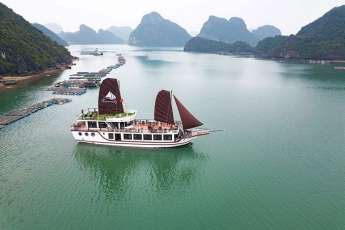

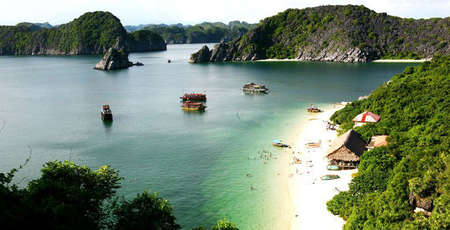










Morgane Ter Cock
on Dec 18, 2025HerbertPhomaMS
on Oct 19, 2025Lilyan Cuttler
on Oct 15, 2025Avenue17XC
on Sep 14, 2025Avenue18JL
on Jul 21, 2025